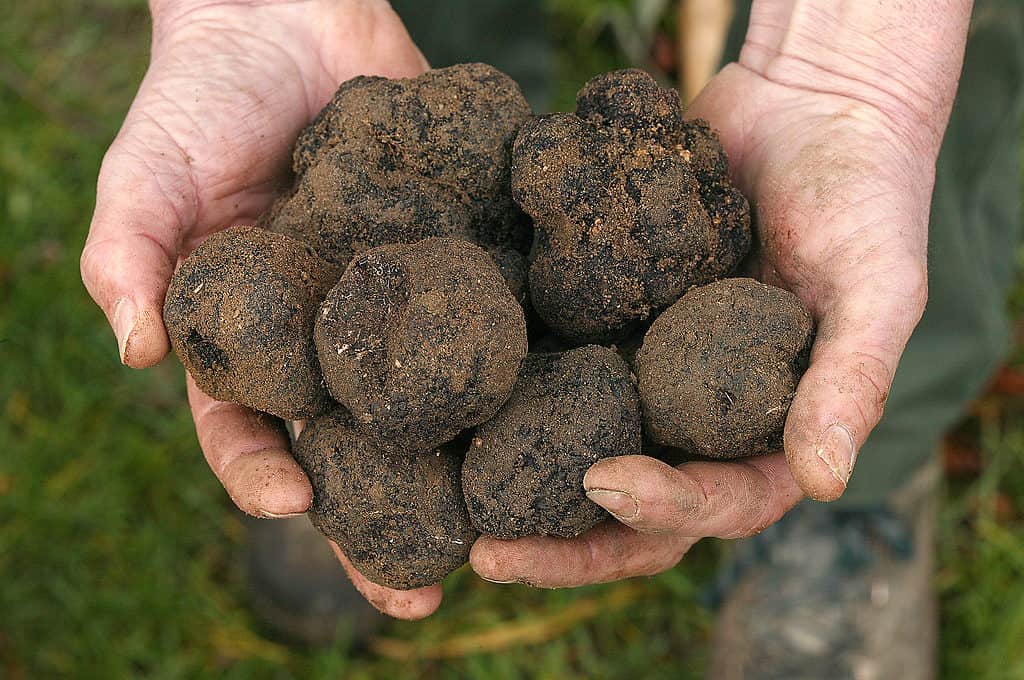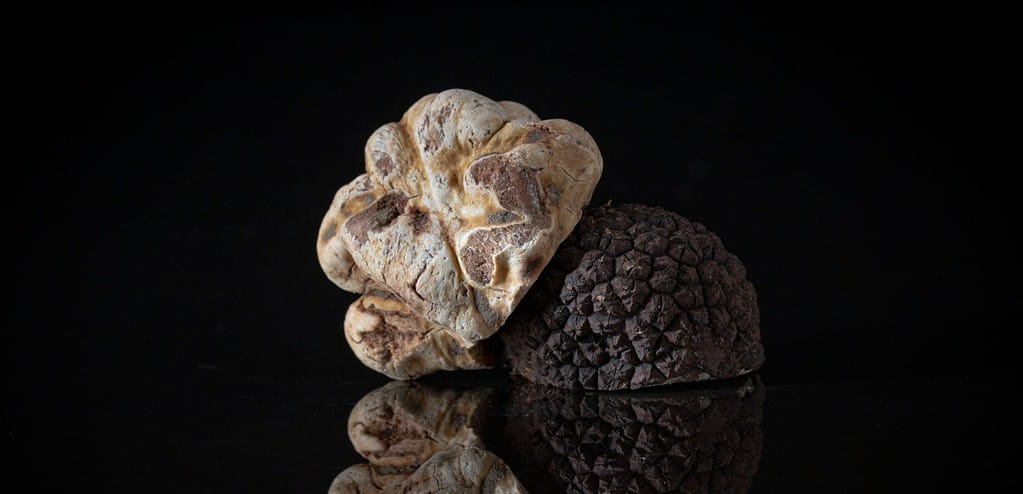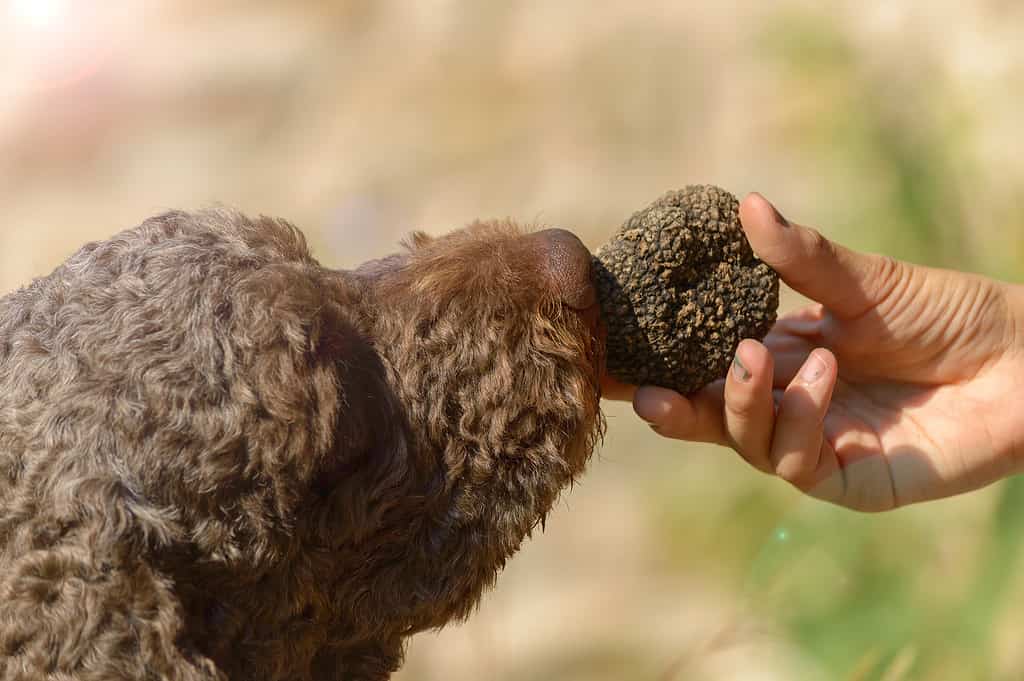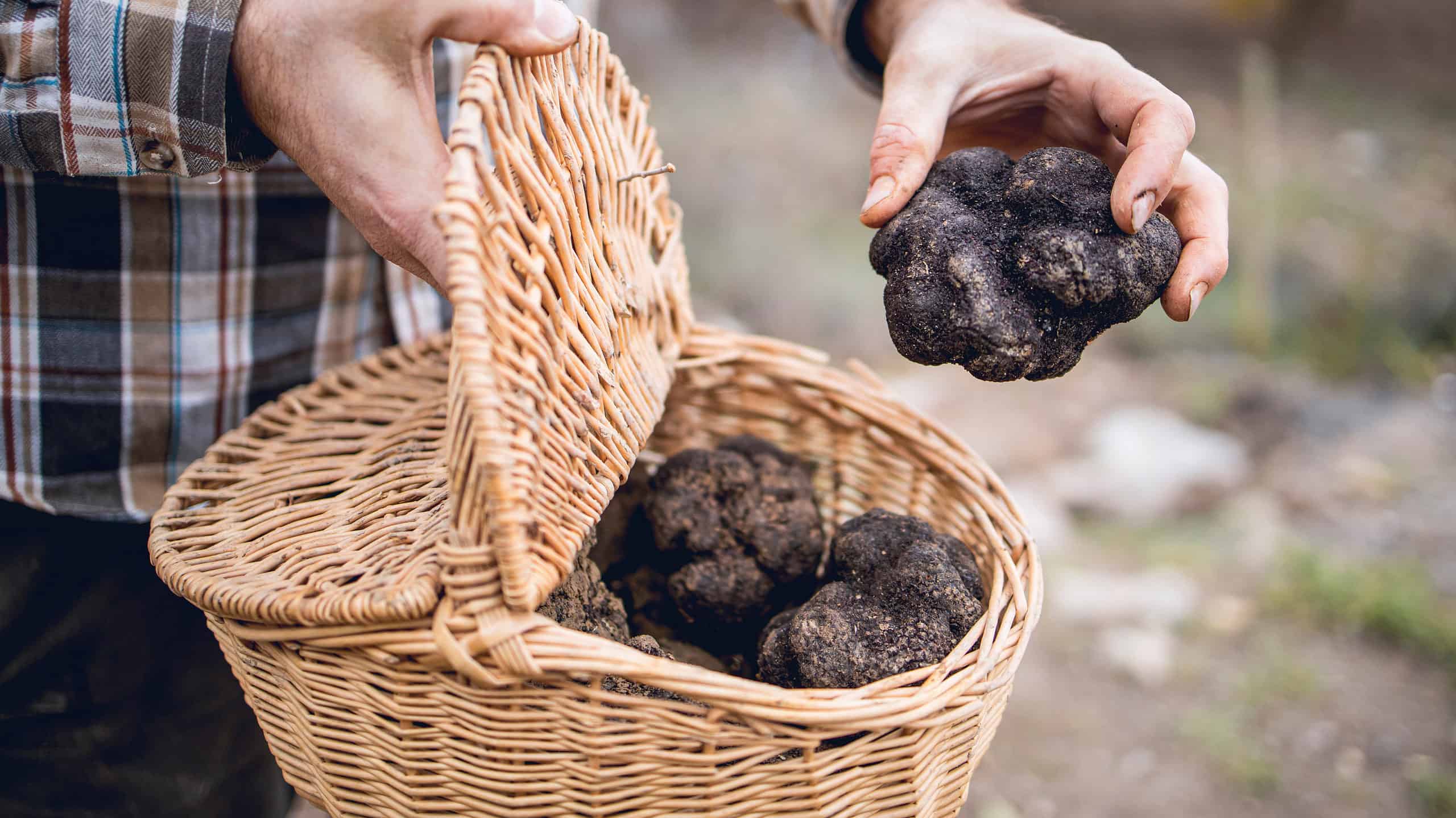There’s no denying that the popularity of truffles has skyrocketed throughout the years. Dishes like truffle pasta, truffle fries, and truffle mac and cheese have become viral sensations and there’s no question as to why. Even though some people might think this is a momentary trend, the truth is that truffles have been a culinary staple for centuries. People as far back as the 1700s enjoyed these earthy delicacies just as much as we do in the modern day. Since then, truffles have joined the leagues of caviar, champagne, and saffron. Each year, the demand for these tubers has continued to climb, and so too has the cost. Let’s discuss truffle prices in 2024 and explore some of the factors that influence their monetary worth.
What Are Truffles?

Truffles are delicate. They have a short shelf life and must be eaten quickly after harvesting.
©Sofia Royo/Shutterstock.com
Although some people might use the word “truffle” to refer to gourmet chocolates, this word is also used to refer to a particular mouthwatering fungus. According to a study published by Thomas Læssøe and Karen Hanson, truffles are the fruit of ascomycete fungus which belongs to the family Tuberaceae. While there are nearly 200 species of truffles that exist worldwide, only a handful are popular in the culinary world. The most popular are black truffles, burgundy truffles, and white truffles.
Truffle Prices in 2024

The harvesting season for this delicacy is very short, contributing to its incredible price.
©slowmotiongli/Shutterstock.com
The price of truffles will vary depending on weight and scarcity. In general, one person will need about 10 grams of truffle to fully enjoy the flavors. Among the truffles popularly used for cooking, white truffles are no doubt the priciest of all. When compared to other truffles, their flavor simply can’t be beaten, and it is exceedingly difficult to find them. According to Tartufo, the average price for about 8 to 20 grams of White Alba Truffles is €1,815.00, or $1,973.24. Fine Black Truffles aren’t far behind at €891.00, or $968.68. Luckily, Black Summer Truffles and Black Winter Truffles are on the more affordable side comparatively. For 8 to 20 grams, you can expect to pay between €400 and €500, or $434.87 and $543.59.
What Makes Truffles So Expensive?

Although commercial farming hasn’t perfected the process of growing these tubers, the outlook remains hopeful for the future.
©Fide Ernesto/Shutterstock.com
The prices for truffles might be jarring for some. However, after learning about the process of procuring these rare fungi, it might seem more reasonable. The primary reason why truffles are so expensive is due to their scarcity. Unlike other produce, truffles are exceptionally difficult to farm. The conditions needed to support their growth are challenging to replicate. Even in the best environmental conditions, their development may take years. According to EHL Insights, “Truffles require a very specific climate to grow and require lots of oak trees, that’s why they’re often found in woodland. Even when all the conditions are perfect for truffles to grow, they are still not guaranteed. When setting up a truffle orchard, it could take up to 6 years before you get a truffle harvest – a business not for the faint-hearted.”
Where to Find Truffles in the Wild

The specialized training dogs undergo in order to sniff out truffles may be a long and expensive process in itself.
©Filippo Arteconi/iStock via Getty Images
Because commercial farming is risky, many people in the truffle business choose to hunt for them in the wild. However, this can be quite a challenge as well. Truffles grow between one and six inches underground, making them incredibly well camouflaged. In order to combat this, many truffle hunters will train dogs or pigs to sniff them out. The Pacific Northwest is likely the best place in America to find them. Those eager to go searching for truffles are likely to have the highest success roughly a week to two weeks after heavy rainfall during the early winter to late spring. After the painstaking process of finding them in the wild, there is a small window in which consumers can eat them. In order to prevent moisture loss, any foraged truffles must be quickly brought to market to ensure peak quality for customers.
What Do Truffles Taste Like?
The flavor that truffles have is almost universally loved by those who try it. Most people describe their taste as meaty, rich, earthy, or nutty. The word “umami” is often used to sum up these adjectives. Truffles are safe to eat cooked or raw, and styles of preparation vary greatly. Many people prefer to thinly slice them to use as a topping, while others prefer to lightly saute them in butter to draw out more flavor. The taste of truffle pairs nicely with pasta, eggs, french fries, cheese, meats, and much more.
Fake Truffle Market

Truffles often grow near the roots of oak, birch, and pine trees.
©brebca/iStock via Getty Images
As with any market with high earnings potential, the truffle market has attracted individuals trying to make a quick buck. Although it might seem difficult to imitate truffles, counterfeiters have found a way around that. Instead of creating knockoff truffles, they instead chose to introduce oil derived from truffles to the market. This sounds fine, however, this product is marked as containing real truffles when that is hardly ever the case. While real truffles are rife with complex flavors, the ingredient that gives truffle oil its taste is 2,4-dithiapentane. This is a compound that is responsible for some of the aromatics present in real truffles, however, it’s only one piece of the puzzle.
Because of this, many truffle oils can fetch extreme prices without bearing the same flavor quality as genuine truffles. However, it is important to note that not all truffle oils are fake, so it’s important to do research on which brand you’re buying. Reading the label can be helpful, but a telltale sign truffle oil is genuine is the presence of truffle bits within the bottle. Try to look out for that as a green flag while shopping.
Final Thoughts
People are crazy about truffles, and it’s easy to see why. Their status as a delicacy, unique flavor, and extreme scarcity all contribute to the public’s ever-growing frenzy. While farmers haven’t perfected commercially growing these tubers, it’s likely that with enough time and research, this will be remedied in the future. Once this happens, the availability of truffles could skyrocket, and the price may subsequently plummet. In the meantime, all we can do is be patient!
The information presented on or through the Website is made available solely for general informational purposes. We do not warrant the accuracy, completeness, or usefulness of this information. Any reliance you place on such information is strictly at your own risk. We disclaim all liability and responsibility arising from any reliance placed on such materials by you or any other visitor to the Website, or by anyone who may be informed of any of its contents. None of the statements or claims on the Website should be taken as medical advice, health advice, or as confirmation that a plant, fungus, or other item is safe for consumption or will provide any health benefits. Anyone considering the health benefits of particular plant, fungus, or other item should first consult with a doctor or other medical professional. The statements made within this Website have not been evaluated by the Food and Drug Administration. These statements are not intended to diagnose, treat, cure or prevent any disease.
Thank you for reading! Have some feedback for us? Contact the AZ Animals editorial team.








